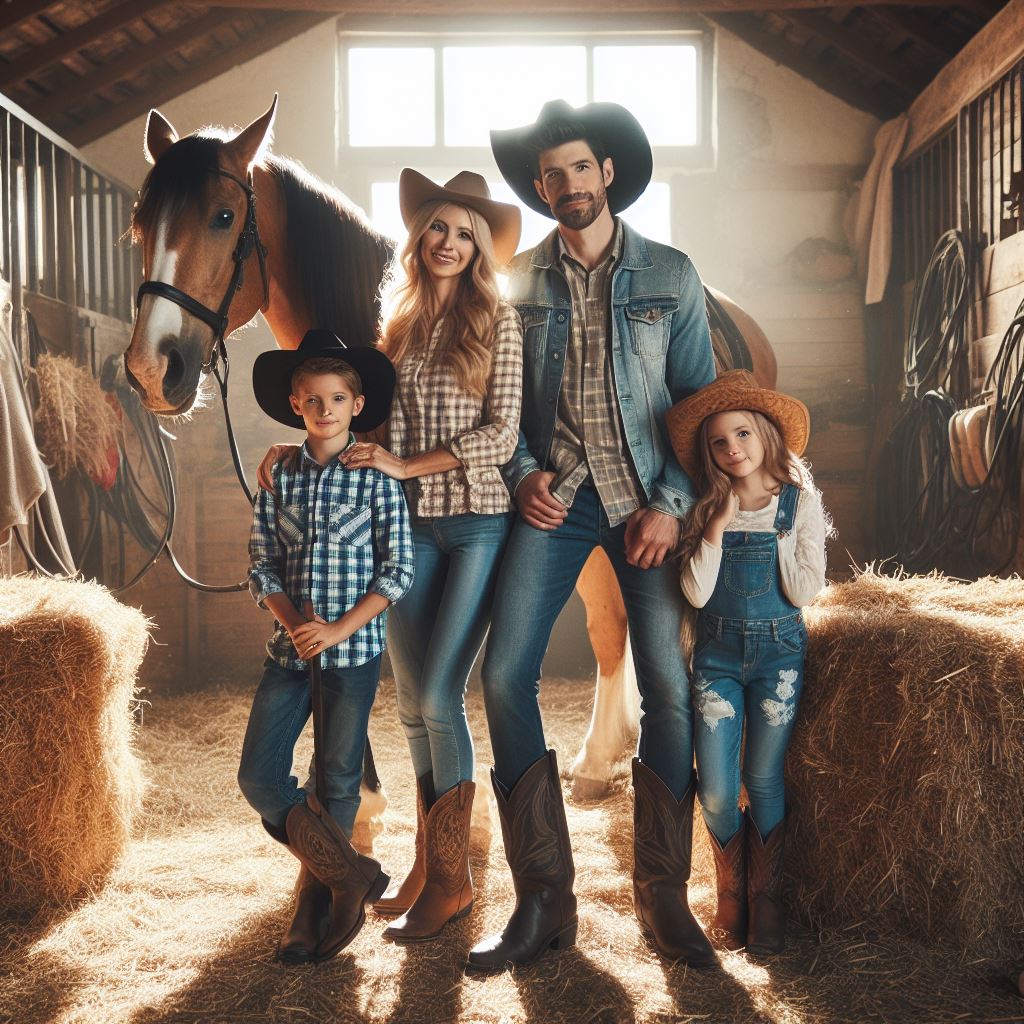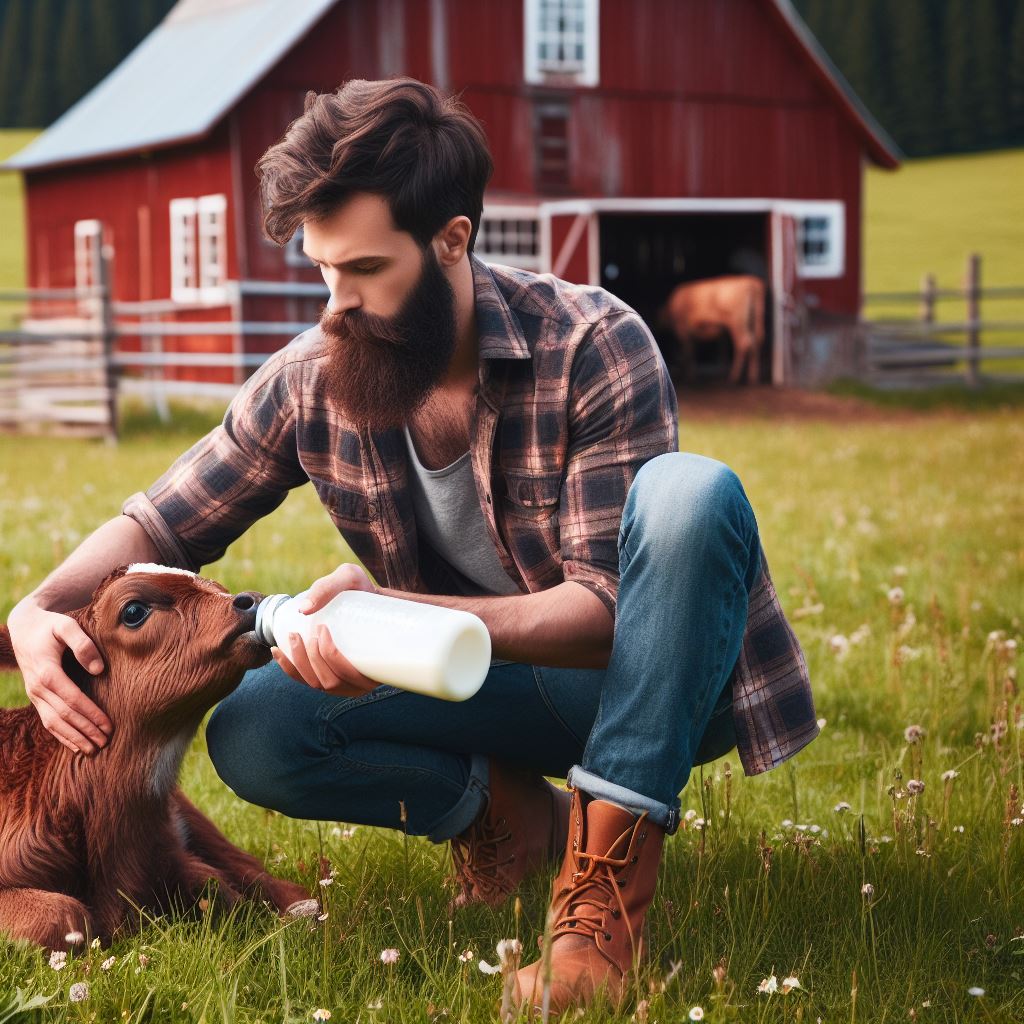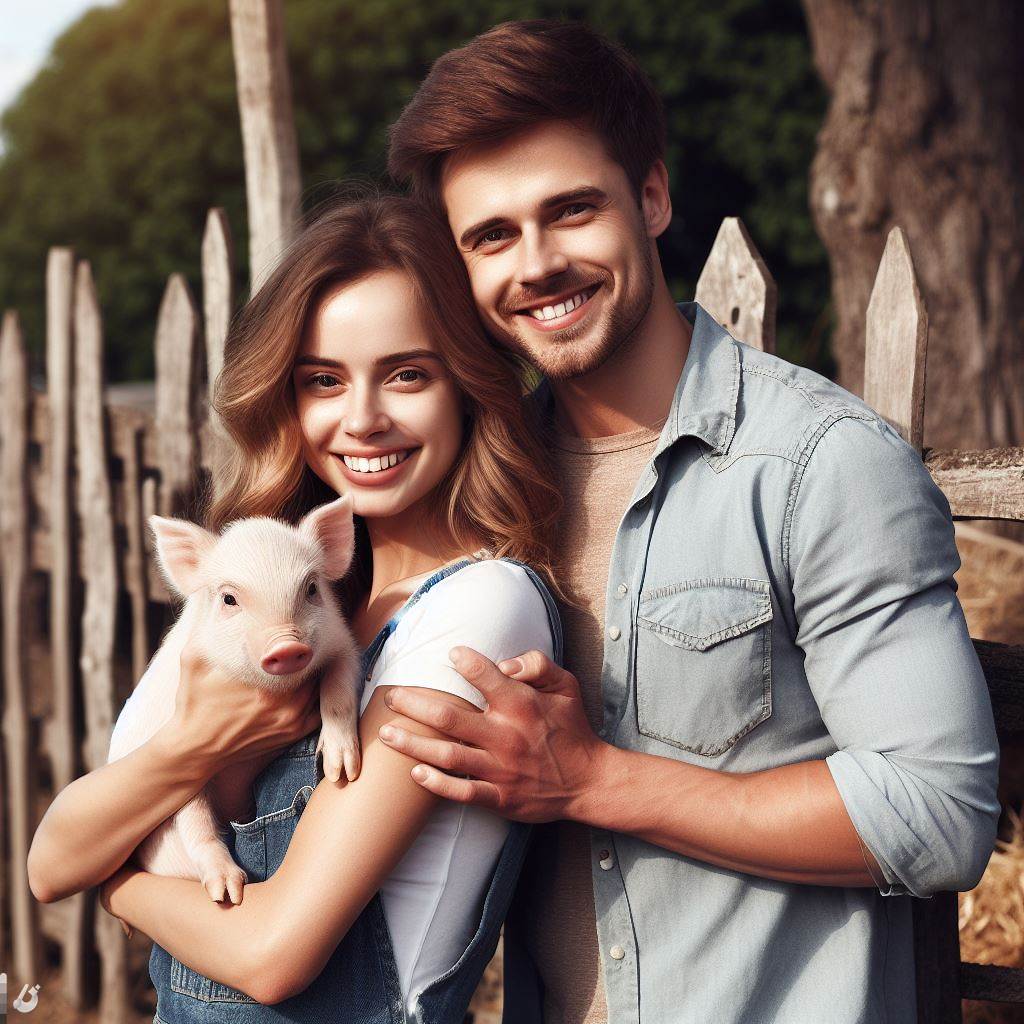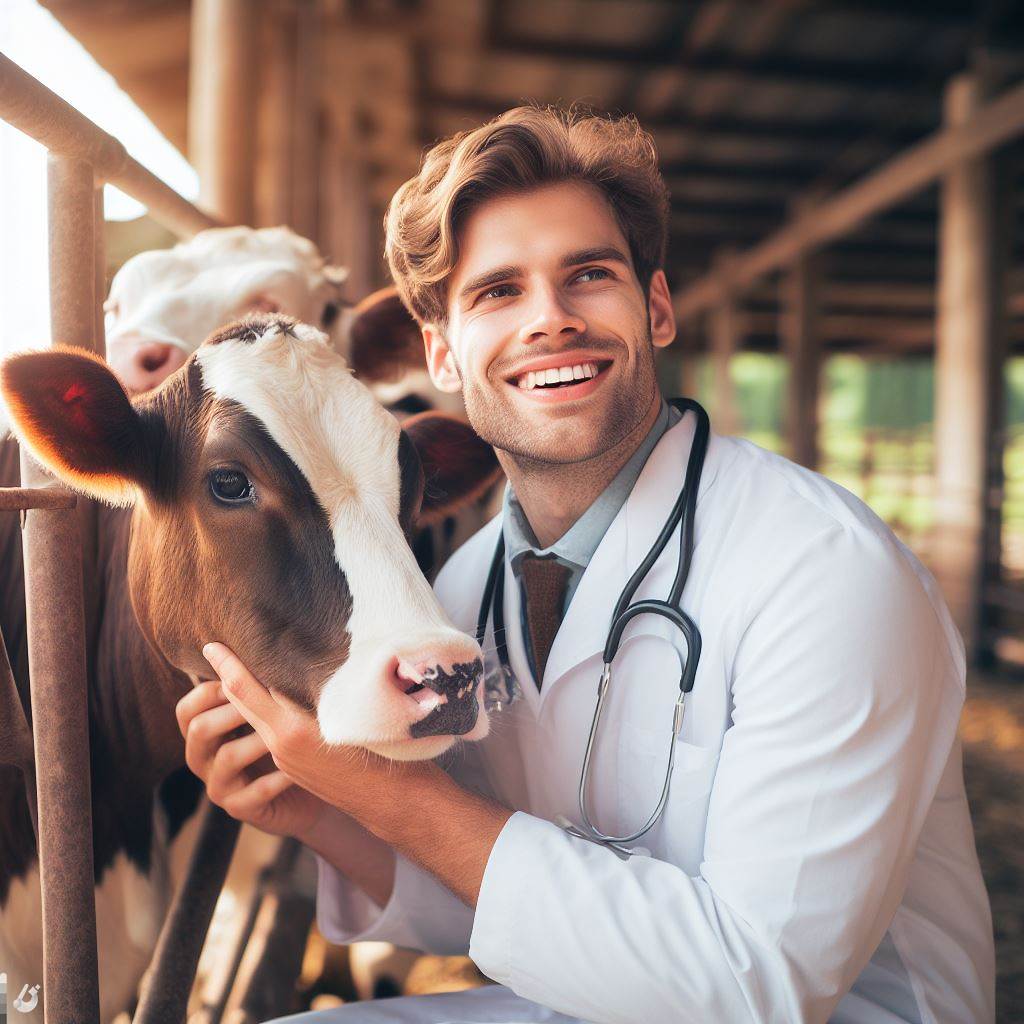Introduction
Horse care is of utmost importance as it directly impacts the health and well-being of these majestic creatures.
Neglecting horse care can lead to various health issues and a decline in performance.
This blog post will provide a comprehensive guide on horse care essentials, covering topics such as nutrition, grooming, hoof care, exercise, and vaccinations.
By following these guidelines, horse owners can ensure their animals live a healthy and fulfilling life.
Understanding the significance of proper horse care is crucial for any horse owner.
It not only promotes their well-being but also establishes a strong bond between the owner and the horse.
By providing the necessary care, horses can thrive and perform at their best in various activities, such as riding, racing, or even companionship.
In this blog post, we will delve into the essential aspects of horse care and provide detailed explanations on each topic.
From the importance of nutrition and the right feed to the significance of regular grooming and the different techniques involved, we aim to equip horse owners with the knowledge needed to maintain their horses’ optimal health.
Additionally, we will discuss the importance of proper hoof care, including regular trimming and shoeing, to prevent any discomfort or lameness.
Furthermore, we will emphasize the role of exercise in keeping horses fit and mentally alert.
Lastly, the blog post will touch upon the significance of vaccinations in preventing common diseases and offering protection against potential life-threatening conditions.
It is our hope that this comprehensive guide will empower horse owners to provide the best care possible for their beloved animals.
By adopting these practices, horses can live long, healthy lives.
Basic Horse Care
Daily routine for maintaining a horse’s well-being
- Start the day by checking on the horse’s overall condition and behavior.
- Clean the horse’s stall or paddock, removing any manure or soiled bedding.
- Provide fresh water in clean buckets or troughs, ensuring it is easily accessible.
- Groom the horse thoroughly, removing dirt, debris, and loose hair from its coat.
- Inspect the horse’s hooves and pick out any debris or stones lodged in the hooves.
- Evaluate the horse’s body condition and adjust its diet and exercise regimen accordingly.
- Exercise the horse regularly, allowing it to stretch its muscles and release pent-up energy.
- Monitor the horse’s appetite, ensuring it continues to eat its daily ration of forage and concentrates.
- Observe the horse’s behavior with other horses, ensuring there are no signs of aggression or bullying.
- Check the horse’s water supply throughout the day, refilling and cleaning as necessary.
Feeding and nutrition guidelines
- Provide horses with a balanced diet consisting of forage, such as hay or pasture, and concentrates like grains.
- Adjust the amount of feed based on the horse’s age, weight, workload, and overall condition.
- Divide the horse’s daily ration into multiple small meals to mimic their natural grazing behavior.
- Avoid feeding horses moldy or spoiled hay, as it can lead to digestive issues.
- Provide access to a mineral block or supplement to fulfill any nutritional deficiencies.
- Monitor the horse’s body weight regularly, making adjustments to the feed accordingly.
- Consult with a veterinarian or equine nutritionist to develop a feeding plan tailored to the horse’s specific needs.
Proper housing and shelter requirements
- Provide a clean and spacious stall or paddock with adequate room for the horse to move comfortably.
- Ensure proper ventilation in the stable to maintain good airflow and prevent respiratory issues.
- Use bedding materials, such as straw or wood shavings, to provide a comfortable resting area for the horse.
- Regularly clean and maintain the stall, removing soiled bedding and replacing it with fresh material.
- Provide secure fencing and gates to prevent the horse from wandering off or getting injured.
- Protect the horse from extreme weather conditions by providing appropriate shelter, such as a stable or run-in shed.
- Insulate the stable during colder months to keep the horse warm and comfortable.
- Monitor the horse’s behavioral and physical responses to its housing environment and make necessary adjustments.
- Provide regular access to turnout areas or pastures to allow the horse to graze and socialize naturally.
- Regularly inspect the fencing and shelter for any signs of wear or damage, and make repairs as needed.
By following these daily routines for horse care, providing appropriate nutrition, and ensuring proper housing conditions, horse owners can maintain the well-being and happiness of their equine partners.
Transform Your Agribusiness
Unlock your farm's potential with expert advice tailored to your needs. Get actionable steps that drive real results.
Get StartedRead: Livestock Tech: Innovations in Animal Farming
Grooming and Hygiene
Importance of regular grooming for a horse’s health
Grooming is an essential part of horse care that contributes to their overall health and well-being.
Regular grooming not only helps to maintain a horse’s physical appearance but also plays a vital role in preventing various health issues.
- Removes dirt and debris: Regular brushing helps to remove dirt, dust, and debris from the horse’s coat, allowing their skin to breathe and promoting a healthy coat.
- Stimulates blood circulation: Brushing and currying stimulate blood circulation, which promotes oxygen and nutrient delivery to the horse’s muscles and tissues, keeping them healthy and strong.
- Prevents skin issues: By removing dirt and sweat from the horse’s coat, grooming minimizes the risk of skin irritations, infections, and other dermatological problems.
- Bonding and trust building: Grooming sessions provide an excellent opportunity for horse owners to establish a bond and build trust with their horses, enhancing the overall relationship.
- Early detection of health problems: During grooming, owners have the chance to observe their horse’s body closely, allowing them to spot any abnormalities or signs of illness at an early stage.
Step-by-step guide on grooming practices
Proper grooming includes a series of steps that ensure thorough cleaning and maintenance of a horse’s coat, hooves, mane, and tail:
- Start with a curry comb: Use a curry comb in circular motions to remove loose hair, dirt, and debris from the horse’s coat.
- Proceed with a dandy brush: Use a dandy brush to flick away remaining dirt and bring out the natural shine of the horse’s coat.
- Use a body brush: The body brush will further remove dirt and distribute the natural oils, giving the coat a healthy sheen.
- Pay attention to the mane and tail: Gently comb through the horse’s mane and tail, removing tangles and debris, and applying detangler if necessary.
- Clean the hooves: Use a hoof pick to remove dirt and rocks from the horse’s hooves, paying attention to the frog and sole.
- Finish with a finishing brush: Use a soft finishing brush to give the horse’s coat a final polish and remove any remaining loose hairs.
Bathing techniques and frequency
Bathing is an occasional grooming practice that helps to deep-clean a horse’s coat and is usually reserved for specific situations:
- When needed: Bathing should be done only when necessary, such as when the horse is excessively dirty, has a skin condition, or before a show.
- Use horse-safe products: Choose specifically formulated equine shampoos that won’t strip the natural oils from the horse’s coat.
- Proper rinsing: Thoroughly rinse all soap and shampoo from the horse’s coat to prevent skin irritations or reactions.
- Dry adequately: Towel-dry the horse and use a cooler or sweat rug to ensure they stay warm until fully dry.
- Avoid over-bathing: Excessive bathing can strip the natural oils from the horse’s coat, leading to dryness and skin issues.
Bathing techniques and frequency may vary depending on factors such as climate, the horse’s activities, and individual needs. Always consult with a professional if unsure.
By following these grooming practices and techniques, horse owners can ensure their horses remain healthy, comfortable, and aesthetically pleasing.
Grooming sessions not only contribute to a horse’s physical well-being but also provide valuable bonding opportunities between the owner and their equine companion.

Hoof Care
Understanding the importance of proper hoof care
- Hoof care is vital for a horse’s overall health and soundness.
- Strong and healthy hooves provide support and cushioning, protecting the horse from injuries.
- Neglecting hoof care can lead to lameness, discomfort, and even long-term damage.
- Regular hoof care ensures proper weight distribution and prevents joint and back problems.
- Healthy hooves also contribute to a horse’s performance and athletic abilities.
Routine hoof maintenance and trimming procedures
- Schedule regular hoof maintenance every six to eight weeks to maintain optimal hoof health.
- Start by cleaning the hooves with a hoof pick to remove dirt, rocks, and debris.
- Trim the hooves using specialized tools like a hoof knife and nipper to remove excess length.
- Maintain an appropriate hoof length depending on the horse’s breed, activity level, and conformation.
- Pay attention to the balance between the toe, heel, and quarters of the hooves during trimming.
- Consult with a professional farrier or equine veterinarian to ensure correct trimming techniques.
- Avoid overtrimming, as it can result in soreness, lameness, and weakened hooves.
- Regularly inspect the hooves for any signs of cracking, splitting, or abnormalities.
Recognizing hoof problems and seeking professional help
- Be observant to detect early signs of hoof problems such as lameness or changes in gait.
- Look for visible signs like cracks, abscesses, thrush, or sole bruising.
- Any foul odor, excessive heat, or unusual discharge may indicate an infection or injury.
- Consult a professional farrier or veterinarian as soon as you notice any abnormalities or concerns.
- They will conduct a thorough hoof examination and diagnose the specific problem.
- Treatments may include trimming, corrective shoeing, medication, or specialized hoof care products.
- Follow the professional’s recommendations and instructions for proper hoof care and treatment.
- Regularly monitor the hooves and note any changes or improvements.
- Prevention is key, so maintain a clean and dry environment to minimize the risk of hoof problems.
- Provide a balanced diet and appropriate supplements to support healthy hoof growth.
Basically, understanding the importance of proper hoof care, practicing routine maintenance, and promptly addressing any hoof problems are essential for a horse’s well-being.
Regular hoof care contributes to their overall health, soundness, and performance.
By being attentive to your horse’s hooves and seeking professional help when necessary, you can ensure they have strong, healthy hooves that support their optimal functioning and longevity.
Read: Soil Sensors: Enhancing Crop Yield Insights
Veterinary Care and Vaccinations
Explaining the necessity of routine veterinary check-ups
Regular veterinary check-ups play a vital role in maintaining the overall health and well-being of horses.
- Veterinary check-ups allow for early detection of any potential health issues or diseases.
- These check-ups ensure that horses receive preventive care, reducing the risk of future health problems.
- Veterinarians can assess the horse’s body condition, dental health, and identify any lameness or musculoskeletal issues.
- Routine check-ups also include vaccinations, parasite control, and dental examinations, ensuring comprehensive care.
Vaccination schedule and recommended shots
Vaccinations are crucial for protecting horses against contagious and potentially deadly diseases.
- Consult with a veterinarian to develop a vaccination schedule tailored to your horse’s specific needs.
- Core vaccines, including those for tetanus, rabies, and eastern and western equine encephalomyelitis, should be given annually.
- Non-core vaccines, such as those for equine influenza or strangles, may be recommended based on your horse’s risk factors and lifestyle.
- Follow the recommended shot intervals to ensure the vaccine’s efficacy and provide the best protection for your horse.
Dealing with common health issues and emergencies
Being prepared for common health issues and emergencies can make a significant difference in your horse’s well-being.
- Establish a good relationship with a local equine veterinarian to have support in case of emergencies.
- Stay knowledgeable about common health issues such as colic, lameness, or respiratory problems, and their early signs.
- Implement preventive measures like proper hygiene, regular exercise, and maintaining a clean living environment.
- Have an emergency kit ready, including basic first aid supplies and contact information for the veterinarian.
Ensuring veterinary care and vaccinations are essential aspects of horse care.
- Routine check-ups allow early detection and prevention of potential health issues.
- Following a proper vaccination schedule protects horses from contagious diseases.
- Being prepared for emergencies and knowing how to handle common health issues is crucial.
By prioritizing veterinary care and vaccinations, horse owners can ensure the well-being and longevity of their equine companions.
Read: CRISPR in Agriculture: Editing Crop Genes
Exercise and Physical Fitness
Benefits of regular exercise for horses
- Improved cardiovascular health and increased stamina.
- Enhanced muscle tone and strength.
- Weight management and prevention of obesity.
- Positive impact on mental well-being, reducing stress and anxiety.
- Strengthened bones and joints, reducing the risk of injuries.
- Better digestion and improved overall health.
Different types of exercise suitable for horses
- Turnout: Allow horses to freely move and graze in a pasture, promoting natural movement.
- Groundwork: Engage in exercises such as lunging, longeing, and horsemanship to improve obedience and communication.
- Riding: Regular riding sessions help maintain fitness and improve performance.
- Jumping: Enhances coordination, agility, and strength.
- Trail riding: Provides mental stimulation and variety to a horse’s exercise routine.
- Trotting and cantering: Great for cardiovascular health and building endurance.
Proper warm-up and cool-down techniques
Warm-up
- Begin with light groundwork exercises to loosen muscles and joints.
- Walk the horse in-hand or under saddle for 10-15 minutes to warm up the muscles.
- Perform gentle stretching exercises to further prepare the horse for exercise.
Cool-down
- Gradually decrease the intensity of the workout.
- Walk the horse in-hand or under saddle for 10-15 minutes to gradually lower the heart rate.
- Allow the horse to graze or rest in a comfortable area to cool down both physically and mentally.
In general, exercise is essential for maintaining the physical and mental well-being of horses.
Regular exercise helps improve cardiovascular health, build muscle tone and strength, manage weight, and reduce stress and anxiety.
Different types of exercise, such as turnout, groundwork, riding, jumping, and trail riding, provide variety and engage the horse mentally.
It is crucial to properly warm up and cool down horses to prevent injuries and ensure their well-being.
By following these exercise guidelines, horse owners can ensure a fit and healthy horse.
Dental Care
Understanding the importance of dental care for horses
- Horses require regular dental care to maintain their overall health and well-being.
- Proper dental care ensures that horses can eat, chew, and digest their food properly.
- Regular dental check-ups can prevent more serious dental issues from developing.
- Ignoring dental care can lead to discomfort, pain, weight loss, and poor performance in horses.
- Dental problems can also affect a horse’s behavior and cause difficulty in controlling them.
- Horses with dental issues may drop food while eating or exhibit resistance to the bit.
- A balanced dental occlusion is essential for a horse to maintain a proper head carriage.
- Young horses should have their first dental check-up by the age of one to ensure proper development.
Recognizing signs of dental problems
- Horse owners should be aware of common signs indicating dental problems in their horses.
- Difficulty in chewing or eating, such as unexplained drop in feed or food becoming partially chewed.
- Excess saliva production, called slobbering, can indicate dental issues.
- Weight loss, poor body condition, and reduced performance may be caused by dental problems.
- Horses with dental issues may exhibit behavior changes, such as head tossing or resisting the bit.
- Foul odor from the mouth or nasal discharge can also be signs of dental problems.
Scheduling regular dental check-ups and procedures
- Horse owners should schedule regular dental check-ups at least once a year, even if no issues are apparent.
- Dental examinations should be conducted by qualified equine dentists or veterinarians.
- During a dental check-up, the dentist will examine the horse’s teeth, gums, and oral cavity.
- If any dental issues are detected, appropriate procedures, such as filing or extraction, may be required.
- Regular dental maintenance, including floating the teeth, can prevent more severe dental problems.
- Horse owners should discuss a dental care schedule with their veterinarian, taking into account the horse’s age and condition.
- Procedures such as sedation may be necessary to ensure a thorough and painless examination.
- Following dental procedures, horse owners should monitor their horses’ eating habits and behavior for any changes.
Dental care plays a crucial role in maintaining the overall health and well-being of horses.
Showcase Your Farming Business
Publish your professional farming services profile on our blog for a one-time fee of $200 and reach a dedicated audience of farmers and agribusiness owners.
Publish Your ProfileRegular dental check-ups, even if no issues are apparent, help prevent serious dental problems from developing.
By recognizing signs of dental problems, horse owners can take prompt action and ensure their horses receive necessary treatment.
Scheduling regular dental check-ups and procedures with qualified equine dentists or veterinarians is essential for maintaining a horse’s dental health.
Implementing a proper dental care schedule, including regular examinations and necessary procedures, helps to prevent discomfort, weight loss, and poor performance.
So, make sure to prioritize your horse’s dental care to ensure their overall health and performance.
Read: Automated Tractors: The Future of Ploughing
Mental Stimulation and Enrichment
In order to ensure the overall well-being of a horse, mental stimulation is of utmost importance.
Just like humans, horses also need activities and enrichment that can keep them engaged and mentally stimulated.
Importance of mental stimulation for a horse’s well-being
Horses are intelligent animals that thrive on mental stimulation. When their minds are engaged, they are happier and less prone to various behavioral issues.
Mental stimulation also helps in preventing boredom and the development of vices like cribbing or weaving.
Engaging a horse’s mind is crucial for their overall mental and emotional health.
Without proper mental stimulation, horses can become dull, restless, and may exhibit signs of frustration or anxiety.
By providing mental stimulation, horse owners can enhance their horse’s problem-solving abilities, promote learning, and foster a stronger bond with their equine companion.
Different activities and toys to keep horses engaged
There are numerous activities and toys that can keep horses engaged and mentally stimulated. Some popular options include:
- Puzzle feeders: These feeders require horses to solve puzzles to access their food, encouraging mental engagement while eating.
- Treat balls: These balls dispense treats as the horse interacts with them, providing both physical and mental exercise.
- Obstacle courses: Setting up obstacle courses with varying challenges can keep horses stimulated and improve their problem-solving skills.
- Groundwork exercises: Lunging, long-lining, and other groundwork exercises not only provide physical exercise but also require mental focus and coordination.
- Clicker training: This positive reinforcement training method allows horses to learn new behaviors and engage their minds through the association of clicks and rewards.
It is essential to rotate and vary these activities regularly to maintain the horse’s interest and prevent boredom.
Providing a stimulating environment for horses
In addition to specific activities and toys, creating a stimulating environment is crucial for a horse’s mental well-being. Elements that can be incorporated include:
- Turnout with other horses: Social interaction with other horses helps in maintaining a healthy mental state for horses.
- Access to pasture: Allowing horses to graze and move freely in a natural environment can provide mental stimulation.
- Environmental enrichment: Providing objects like scratching posts, hanging balls, or mirrors within the horse’s living space can promote curiosity and exploration.
- Regular changes in surroundings: Introducing new obstacles, changing the arrangement of objects, or taking horses on different routes during rides can prevent monotony.
It is important to observe individual horses and adapt the level of mental stimulation based on their preferences and personalities.
Some horses may prefer more physical activities, while others may enjoy problem-solving tasks.
In essence, mental stimulation and enrichment play a crucial role in maintaining a horse’s overall well-being.
Horse owners should prioritize providing activities, toys, and a stimulating environment to engage their horses’ minds and prevent boredom or behavioral issues.
By doing so, they can ensure their horses lead happy, healthy, and fulfilling lives.
Read: Agri Solar Panels: Powering Farms Sustainably
Emergency Preparedness
Creating an emergency plan for horses
Being prepared for emergencies is crucial when it comes to horse care. Developing an emergency plan will help you stay calm and organized if a crisis occurs.
Here are some essential steps to include in your emergency preparedness plan:
- Identify potential emergency situations: Consider natural disasters such as wildfires, floods, or hurricanes that are common in your area. Also, think about accidents, injuries, or illness that could affect your horse.
- Maintain adequate insurance coverage: Ensure that your horse is covered by an equine insurance policy that includes emergency medical care and evacuation expenses.
- Identify safe locations: Research and identify safe locations in case evacuation becomes necessary. Find nearby facilities or friends who can accommodate your horse during emergencies.
- Arrange transportation: Have a plan in place for transporting your horse to a safe location. Ensure that you have access to a suitable trailer or transportation service if needed.
- Formulate an evacuation plan: In the event of an emergency, determine a clear evacuation route and have a backup route in case the primary one is blocked.
- Communicate your plan: Share your emergency plan with barn staff, neighbors, and friends who may assist you during an emergency. Make sure they understand their roles and responsibilities.
Stocking a first aid kit and knowing basic first aid procedures
Accidents and injuries are a part of horse ownership.
Having a well-stocked first aid kit and knowing basic first aid procedures can make a significant difference in a horse’s well-being. Here’s what you need to know:
- Essential items for your first aid kit: Include clean towels, gauzes, bandages, antiseptic solution, wound ointment, non-stick adhesive pads, rubber gloves, and a thermometer.
- Regularly check and replenish your kit: Make sure your first aid kit is up to date and all items are within their expiration dates. Replace used or expired items promptly.
- Know basic first aid procedures: Learn how to clean wounds, wrap bandages, and recognize common horse ailments such as colic, lameness, or choking. Enroll in a first aid course specifically for horses.
- Consult your veterinarian: Keep a list of emergency contact numbers for your vet and nearby equine hospitals. In case of an emergency, call your vet immediately for guidance.
Importance of having contact information for veterinarians and emergency services readily available
During emergencies, having easy access to contact information for veterinarians and emergency services is critical. Here’s why:
- Quick response time: In emergencies, every minute is precious. Having contact information readily available allows you to reach out to professionals quickly, increasing the chances of a better outcome for your horse.
- Expert guidance: Veterinarians are trained to handle equine emergencies, and contacting them promptly ensures you can receive vital instructions to stabilize your horse’s condition before further treatment.
- Coordination with emergency services: In severe cases, emergency services such as fire departments or rescue teams may be required. Having their contact information readily available allows you to quickly request their assistance.
- Peace of mind: Knowing that you have all necessary contact information accessible provides peace of mind. During stressful situations, having this information readily available eliminates unnecessary panic and confusion.
Remember, emergencies can happen unexpectedly, and being prepared is crucial for your horse’s well-being.
By creating an emergency plan, stocking a first aid kit, and having all relevant contact information at hand, you can ensure the safety and care of your beloved equine companion.
Read: Sustainable Tech in Agriculture: A New Era
Conclusion
Recap of the key points in horse care essentials
Proper nutrition, regular grooming, exercise, vaccinations, and regular veterinarian check-ups are essential for horse care.
Encouragement to prioritize horse care and act as responsible horse owners
By providing the proper care and attention, we ensure the well-being and happiness of our beloved horses.
As responsible horse owners, it is our duty to prioritize horse care and follow the essential practices mentioned in this guide.
Ensuring that our horses receive proper nutrition is crucial for their health and performance. Regular grooming helps maintain their coat, skin, and overall hygiene.
Exercise is vital to keep our horses physically fit and mentally stimulated.
Vaccinations protect them from diseases and illnesses, while regular veterinarian check-ups ensure early detection and prevention of any underlying health issues.
By following these key points, we not only enhance the physical health and well-being of our horses but also establish a bond of trust and companionship.
Understanding the importance of horse care motivates us to act responsibly and provide the necessary care and attention they require.
As horse owners, we have the power to make a positive impact on our horses’ lives.
Let us prioritize their care and be vigilant in providing them with a safe, comfortable, and healthy environment.
Showcase Your Farming Business
Publish your professional farming services profile on our blog for a one-time fee of $200 and reach a dedicated audience of farmers and agribusiness owners.
Publish Your ProfileBy doing so, we contribute to their longevity, happiness, and overall quality of life.
Remember, horse care is not just a responsibility but also a privilege.
Cherish the opportunity to care for these magnificent creatures and be proud of the dedication and commitment we demonstrate as responsible horse owners.




